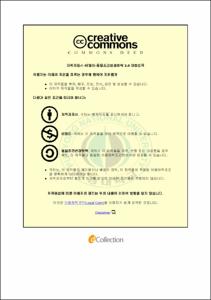원료의 선도가 멸치액젓의 품질 및 위생안전성에 미치는 영향
- Alternative Title
- Effect of raw material freshness on food quality and safety of anchovy fish sauce
- Abstract
- Fish sauce is one of the fishery product that it was extracted from the fermentation of fish with sea salt during a long period. It is used as a crucial ingredient in many types of kimchi, seasoned the vegetable, side dish etc. However, fish sauce was formated histamine that is thus identified as a hazard in fish sauce because of long fermented period under unhygienic condition. The purpose of this study is to investigate the impact of raw material freshness on the quality and hygienic safefy of anchovy fish sauce and suggest the freshness of raw material to make high quality and hygienic safe of anchovy fish sauce.
At first, to devide the raw material's freshness levels, raw anchovy was left for 24 hours and each 4 hours, anchovy was mixed with salt to make fish sauce. The levels of VBN and histamine of raw materials by freshness were measured to know their exact freshness.
As a result, the levels of VBN and histamine increased as time passed each contents were 16.29-87.65 mg/100 g and 6.14-1499.63 mg/100 g, respectively. As fish sauce fermented for 18 months, the contents of VBN were 205.31-270.51 mg/100 g and histamine were 120.54-1707.22 mg/100 g, repectively. These results means the levels of VBN and histamine of raw materials are significantly associated with the hygiene of anchovy fish sauce.
Then, the content of moisture, salinity, total nitrogen and amino nitrogen and pH were measured to compare the quality of each fish sauce. At raw materials, the contents of moisture were 69.57-72.15% and there were no significantly different. The contents of moisture of fish sauce during fermented for 18 months, it kept at all groups and at 18monts, the contents were 64.33-66.59% and it showed no significant difference. The salinity of raw materials was 1.15-1.27%, and fish sauce was 23.62-25.58% and it was also no significantly different. pH was 5.15-5.28 at raw materials and increased as freshness was decreased and 5.30-5.56 at fish sauce. The contents of total nitrogen of raw materials were 2.71-2.99%, showing no significantly different. As fish sauce fermented, At 3months fermented fish suace, the highest freshness group was 1.37% of total nigrogen content and as the freshness was low, the content of total nitrogen increased and the lowest freshness group was 1.56%. At 18months, they were 2.19-2.23% and no significantly different. The contents of amino nitrogen of raw were 363.07-633.65 mg/100 g. At 3months fermented fish sauce, the contents of amino nitrogen were 892.01-1220.34 mg/100 g that showed the content was increased as the freshness was low. At 18 months, the contents of amino nitrogen were 1271.31-1398.98 mg/100 g.
To investigate the reason of different contents of histamine at each fish sauce, bacteria from each groups were isolated and identified. At each groups, different bacteria were identified and among them, Staphylococcus epidermidis, Staphylococcus hominis, Kocuria kristinae, Pantoea spp, Leuconostoc mesenteroides ssp. cremoris were known to make histamine from histidine. At group Ⅴ, Ⅵ, Ⅶ those the lowest three groups of freshness level of raw materials, Leuconostoc mesenteroides ssp. cremoris was identified. Each bacteria were cultured at tryptic soy broth containing 0.5% of histidine for 4 days at 35℃. Leuconostoc mesenteroides ssp. cremoris produced the highest content of histamine 42.88-54.18 mg/kg and the others produced histamine 3.79-20.2 mg/kg. This means that fish sauce made by low freshness materials contain bacteria have strong ability to make histamine from histidine.
These findings suggest that the freshness of raw material influences the hygiene and safety of fish sauce, and therefore, it is the most important to manage the freshness of raw material to make the high quality and hygienically safe fish sauce.
- Issued Date
- 2014
- Awarded Date
- 2014. 2
- Type
- Dissertation
- Publisher
- 부경대학교
- Alternative Author(s)
- Jeong Minhong
- Affiliation
- 대학원
- Department
- 대학원 식품공학과
- Advisor
- 조영제
- Table Of Contents
- Abstract ⅲ
서 론 1
재료 및 방법 4
1. 실험 재료 4
1. 1. 멸치액젓 제조 4
2. 실험 방법 4
2. 1. 수분, 식염 함량 및 pH 4
2. 2. 총 질소 및 아미노산성 질소 함량 4
2. 3. 휘발성 염기질소 함량 5
2. 4. Histamine 함량 5
2. 5. 미생물 분리 및 동정 5
결과 및 고찰 9
1. 원료 멸치의 선도에 따른 이화학 성분변화 9
1. 1. 수분, 식염 함량 및 pH 9
1. 2. 총 질소 및 아미노산성 질소 13
1. 3. 휘발성 염기질소 및 hitamine 16
2. 원료의 선도가 액젓 품질에 미치는 영향 19
2. 1. 수분, 식염 함량 및 pH 19
2. 2. 총 질소 24
2. 3. 아미노산성 질소 27
2. 4. 휘발성 염기질소 29
2. 5. Histamine 31
3. 원료 멸치 선도가 액젓의 미생물에 미치는 영향 34
3. 1. 미생물 동정 및 histamine 생성능 34
요 약 38
참고문헌 41
감사의글 48
- Degree
- Master
- Files in This Item:
-
-
Download
 원료의 선도가 멸치액젓의 품질 및 위생안전성에 미치는 영향.pdf
기타 데이터 / 949.88 kB / Adobe PDF
원료의 선도가 멸치액젓의 품질 및 위생안전성에 미치는 영향.pdf
기타 데이터 / 949.88 kB / Adobe PDF
-
Items in Repository are protected by copyright, with all rights reserved, unless otherwise indicated.